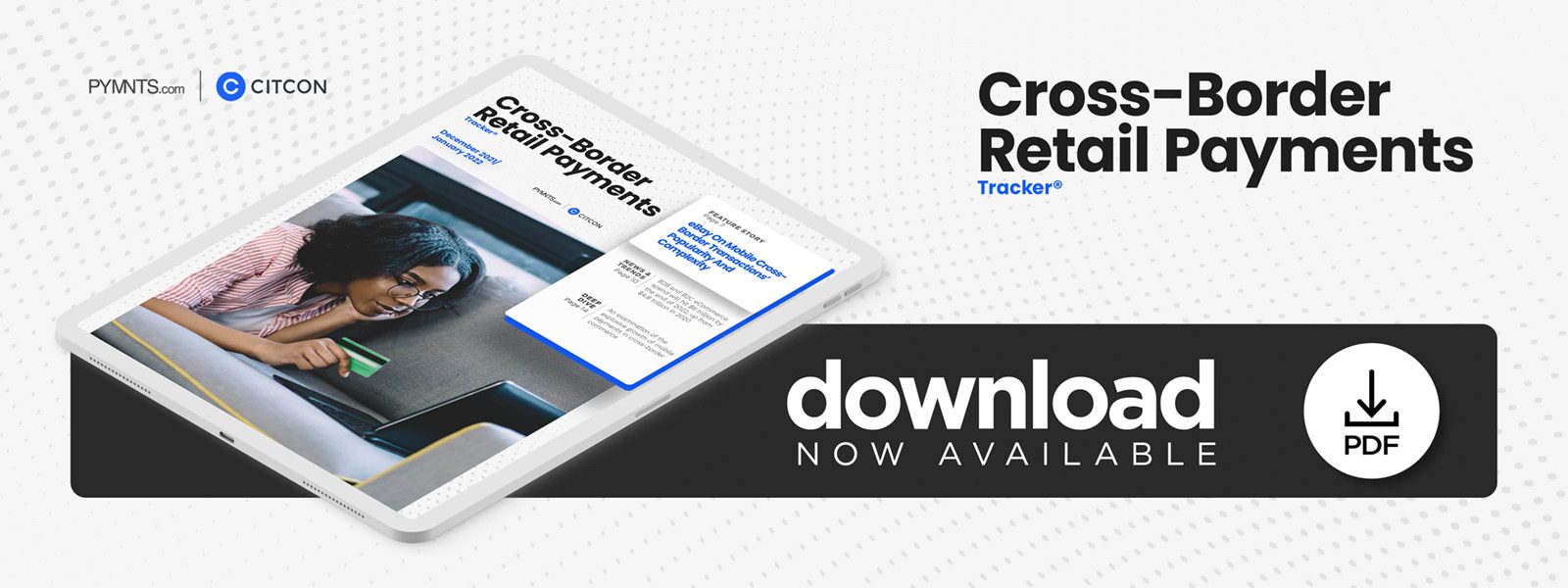Deep Dive: The Explosive Growth of Mobile Payments for Cross-Border Transactions

The amount of money crisscrossing the globe each year is staggering, with $156 trillion expected to cross international borders annually by 2022. These payments include everything from multibillion-dollar corporate acquisitions to small value remittances sent by migrant workers, but one of the most quickly growing market segments is individual consumer transactions for goods and services.
More than 400 billion consumer transactions are expected to occur in Europe each year by 2025, for example, marking a compound annual growth rate (CAGR) of 13%. The Asia-Pacific region, traditionally considered a leader in digital payments, is expected to comprise half of the world’s noncash transactions by 2025, rising at a CAGR of 28%.
One major contributor to this growth is the surging popularity of mobile commerce, with consumers using their smartphones to purchase items ranging from toilet paper to computers to automobiles. Mobile commerce is expected to grow by 70% in the next five years, accounting for $3.1 trillion in purchases, compared to the $2.1 trillion in mobile commerce purchases last year. This rapidly changing eCommerce paradigm has forced merchants to quickly adapt to the new normal.
The following Deep Dive explores how mobile payments have affected cross-border commerce and how merchants are adopting new systems to meet consumers’ growing preferences for mobile commerce.
Cross-Border Commerce Gets Mobile
The surge in mobile cross-border commerce over the past several years can be attributed to several factors, but arguably the most important is the rapidly growing share of individuals with access to mobile devices. Smartphones have been near-ubiquitous in the industrial world for some time, and they are now gaining traction in emerging economies, where 83% of adults currently have access to one.
This mobile device ownership growth has expanded to mobile payment methods such as digital wallets: 22% of purchases at the point of sale were made with wallets in 2019, with this volume expected to swell to 30% by 2023. eCommerce transactions are seeing even higher rates of mobile wallet use, with it rising from 42% in 2019 to 52% by 2023.
Banks and FinTechs with robust digital infrastructures have pounced on the mobile payments bandwagon, offering new services to meet customers’ demand for mobile cross-border payments. These financial institutions prioritize customer convenience, as cross-border payments are traditionally fraught with complications such as compliance regulations, long processing times and excessive fees.
To solve these issues, many are leveraging third-party application programming interface solutions, which can provide instant access to critical regulatory information, access payment beneficiary information, validate beneficiary bank details and apply and adjust exchange rates.
While banks may be able to streamline cross-border payment integration due to their immense resources and financial know-how, individual merchants may lack both of these factors and can find cross-border transactions frustrating and expensive. However, neither of these problems are unsolvable.
Merchants Adapt Their Payments Systems for Cross-Border Transactions
The biggest challenge for merchants when accepting mobile cross-border transactions is accepting the variety of payment options that consumers crave. The average eCommerce merchant offered its customers 5.7 payment methods in 2016 and 6.2 payment methods in 2017, but just 6.8 in 2021. This falls behind the average number of currencies offered each year, at 6.1, 7.8 and 10.8, respectively — meaning that while there is undoubtedly customer appetite for commerce with different countries, there may not be a wide enough variety in payment methods to satisfy every customer.
Another feature merchants are adding to satisfy cross-border mobile consumers is free shipping. This feature removes a significant financial strain from the buyer, as shipping items across international lines incurs the fee from the shipping company and any duties or tariffs leveled by the receiving country. Nearly 37% of merchants offered free shipping in 2016, but this number swelled to more than 59% in 2021.
Further driving the need for free shipping was the competitive need against eCommerce giants like Amazon and its Amazon Prime service, and the increased demand for eCommerce across the board due to the pandemic significantly curtailing brick-and-mortar retail.
Shopping convenience is also a key driver of mobile cross-border sales. Merchants are exploring and integrating many features of their own, such as saved customer profiles and product recommendations, and financial oversight agencies have given them a helping hand in some cases. For example, he central banks of Malaysia and Thailand recently launched a cross-border payment initiative that leverages QR codes, allowing merchants and consumers in both countries to access instant cross-border payments through their mobile devices.
As more merchants enter the cross-border space, the need to offer fast, convenient and secure cross-border mobile payments will become vital to maintaining a competitive edge. Merchants will need to harness every tool available or risk being swept aside.

